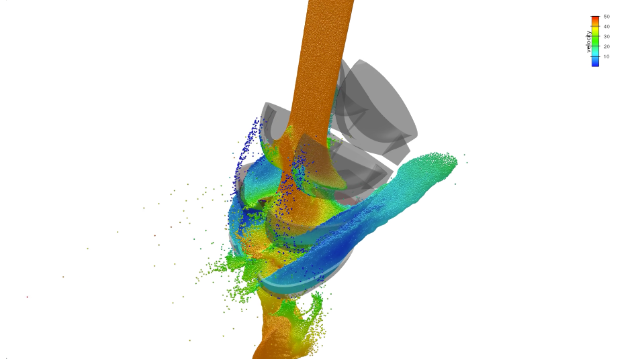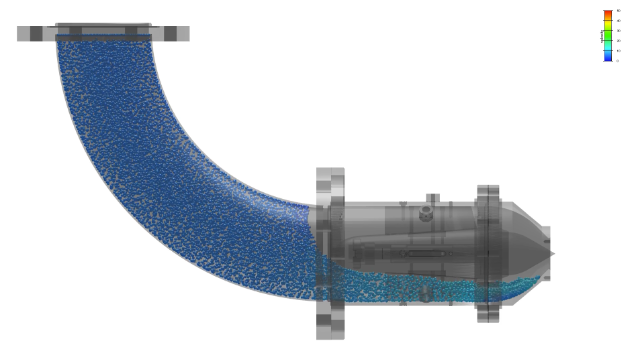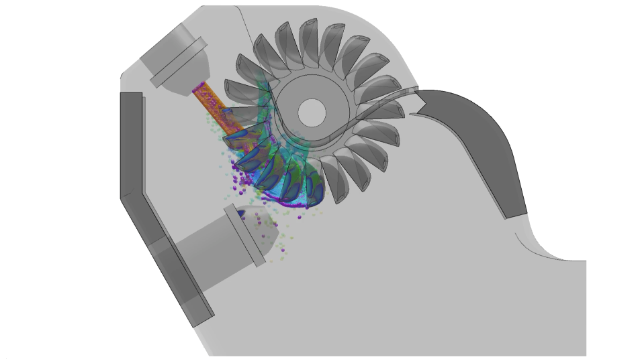In this field of application, we are currently engaged in impulse type turbines, so-called Pelton turbines. The need for simulations arises due to challenges concerning the modernization process of existing plants.
The surface of a turbine runner is damaged by sand or even small pieces of rock that are contained in the water jet driving the turbine. This leads to changes in the water flow and, eventually, to a reduction of the turbine’s efficiency. In consequence, the runner has to be replaced at some point. In the course of this modernization process, further actions can be implemented that increase the efficiency, e.g. additional built-in components or deflectors.
In order to evaluate design changes to optimize for long lasting efficiency, virtualization promises great potential for speeding up the development process. Simulation is a great tool for predicting the fluid flow, formation of water sheets and material stress – long before a prototype is built.
 Simulate with complex geometries and complex physics
Simulate with complex geometries and complex physics


